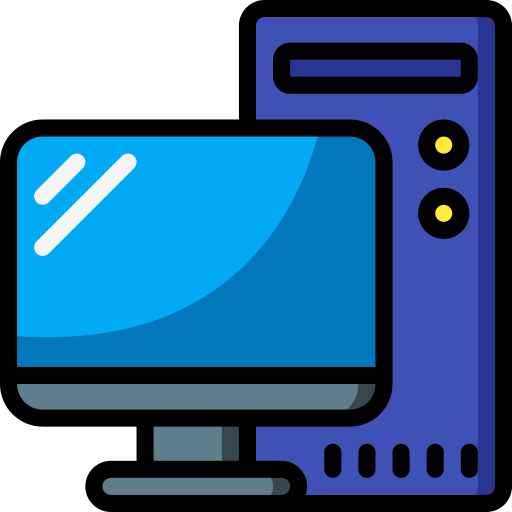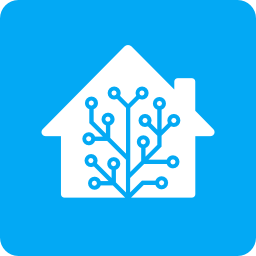

There are few if any 10” UPS units available anyway so weight is less of a worry. It’s one of the biggest weaknesses of the 10” system currently.


There are few if any 10” UPS units available anyway so weight is less of a worry. It’s one of the biggest weaknesses of the 10” system currently.
It’s a feature that’s often been requested, but hasn’t appeared yet. The best option out of the box is creating non-Administrator users and then creating custom dashboards and panes per user with only the controls they need.
But that doesn’t stop a user from poking around still, because they can still access all devices and entities through features like the Logbook - which is always accessible because sidebar items can’t be controller per user.
There are some HACS bits that might be able to lock things down a bit further, like Kiosk and Guest modes.
I’ve heard some people get round this by setting up inebriations with Apple/Google/Amazon ecosystem, only exposing the desired entities/devices, and then giving others access to those and keeping them out of Home Assistant altogether.
It’s a feature set I wish they would add/expand, I’m sure anyone with a home office and mischievous children would agree.


It’s something I often hear complaints about. Several of the Home Assistant users I know love the way it integrates all their smart devices together, but say they find making good dashboards difficult.
Improvements like proper drag and drop and better auto categorisation and population will go a long way to help them. The old default dashboard that just lumped everything in one screen isn’t a great way to get started.
I’ve got parts on order for this very project, should arrive this week.
I previously tried using one of those large pressure mats but it didn’t work under the mattress.


That’s Thread. Matter is an application layer standard, which currently supports running over WiFi, Ethernet or Thread.
Matter could run over new wireless systems in the future.


A few years ago the hose on our washing machine split and we didn’t realise until water started coming out from under the units. Thankfully damage was minimal but it was a big pain to dry out.
I’ve had some of those Aqara leak sensors in place since as a precaution.
Just remember to change the batteries regularly! Easy to forget them when they are out of sight.
I have the G4 Doorbell, it’s worked well as doorbell and camera in both UniFi and Home Assistant.
I had no luck at all getting it to work with a chime though. I tried several different chimes and transformers and the chime would never work.
I ended up setting up automations to trigger device notifications and a bell sound on smart speakers to act as the chime instead.


I’m surprised they didn’t include an option to disable the backup encryption.
It’s a good feature to have but it’s probably overkill for users who only store backups locally. Encrypting backups increases security but also danger, lose the keys and lose the data. It should be up the user to decide on that tradeoff.


There are some Xiaomi Bluetooth temperature sensors available. I have a few of the LYWSD03MMC models. They are very cheap, have a LCD screen, and can also be flashed with custom firmware.
I have a few flashed with custom firmware and use them as general sensors around the home integrated with Home Assistant via ESPhome proxies.
I’m not sure how you could monitor them from both a phone and a Bluetooth proxy, but as they are so cheap and hackable they might be worth playing with.


Some Zigbee smart plugs and sockets have configurable calibration settings. I have some SmartThings smart plugs that have calibration settings, and I think the new IKEA smart plugs with power monitoring have calibration settings too.
There are some resellers providing generic Wi-Fi smart plugs pre flashed with Tasmota and calibrated correctly. Not sure where you are located but in the UK I can recommend Local Bytes.
I’ve also seen people recommend Shelly devices for power monitoring for accuracy. The Powercalc integration developer used to recommend Shelly devices for measuring power use of new devices to create Powercalc profiles.
I wouldn’t expect too much from accuracy from any of these smart devices though. They are intended for general consumer use to provide general ideas about energy use - they are not scientific instruments and probably shouldn’t be treated as such.
If you are looking to monitor homelab devices specifically perhaps you should look at a more professional/enterprise PDU instead.
Remember that to properly calibrate any of these devices you will also need an accurate reference device to calibrate against.
Power costs vary a lot around the world, depending on where OP lives every little saving can help.


I haven’t done any channel optimisation so far, I probably should do. I have the P version of the Sonoff Zigbee dongle, I haven’t tried the E version.
I’ve also been careful with picking router devices. I’ve tried to avoid router devices that have poor reported compatibility with Aqara. There is a page/thread somewhere online where people were compiling lists of devices that do or don’t play nice with Aqara. IKEA devices apparently work very well with Aqara, I’ve been using their smart plugs wherever I can.
My Zigbee network also improved a lot when I set up some IKEA plugs in the loft. My house also has thick walls, but it seems Zigbee signal can propagate more easily through ceilings/floors.
Using quality brand batteries also seems to help a bit, at least from a battery life point of view.


I’m happy to see untracked energy devices covered in the energy graphs. I’d been using a Grafana dashboard to display more detailed energy visualisations including consumption of untracked devices before.


Still a win for Home Assistant to have a big brand like Aqara want to play ball at all.
if they are supporting the current Matter/Thread devices hopefully they will do the same for future devices, especially (if and) when they start to deprecate their Zigbee devices.


Aqara devices can be finicky with non-Aqara devices, especially router devices.
I’ve personally also had much better results with Aqara devices since switching to Zigbee2MQTT and a Sonoff Zigbee stick, I had a lot more dropouts with ZHA and a Conbee II stick.


Have you got any air quality sensors? Particulates, CO2, VOCs, CO, Radon, there’s a while bunch of sensors, and a variety of DIY projects to put them together.
It also has the practical benefit of maybe improving your health.
Might be worth looking into LoRa for longer range, it’s got quite cheap to play with now.


It’s a real step up for managing Home Assistant. I was using it earlier to find some devices to reconfigure and it’s a lot faster. The xtra panels in the UI feel a little cramped on smaller screens though.
I wish they would implement a proper permissions system next, the lack of control is the other admin bugbear of mine with Home Assistant.


I always keep Home Assistant as up to date as possible. Home Assistant keeps improving a lot. Month to month each update goes fairly seamlessly if HA is kept up to date, but the further it falls behind the harder it is to catch back up. Recent optimisation improvements have also made the update process faster.
If you can make the time it’s worth the effort. Even if you have to “start over” somewhat there is probably a lot you have learned since that you can use to improve your setup.
There are 4 bay units that would fit on a 10” inch shelf. I’ve seen some DIY projects too.
Using SFF/mini PCs is also popular, there are models that can take multiple SATA/NVMe drives